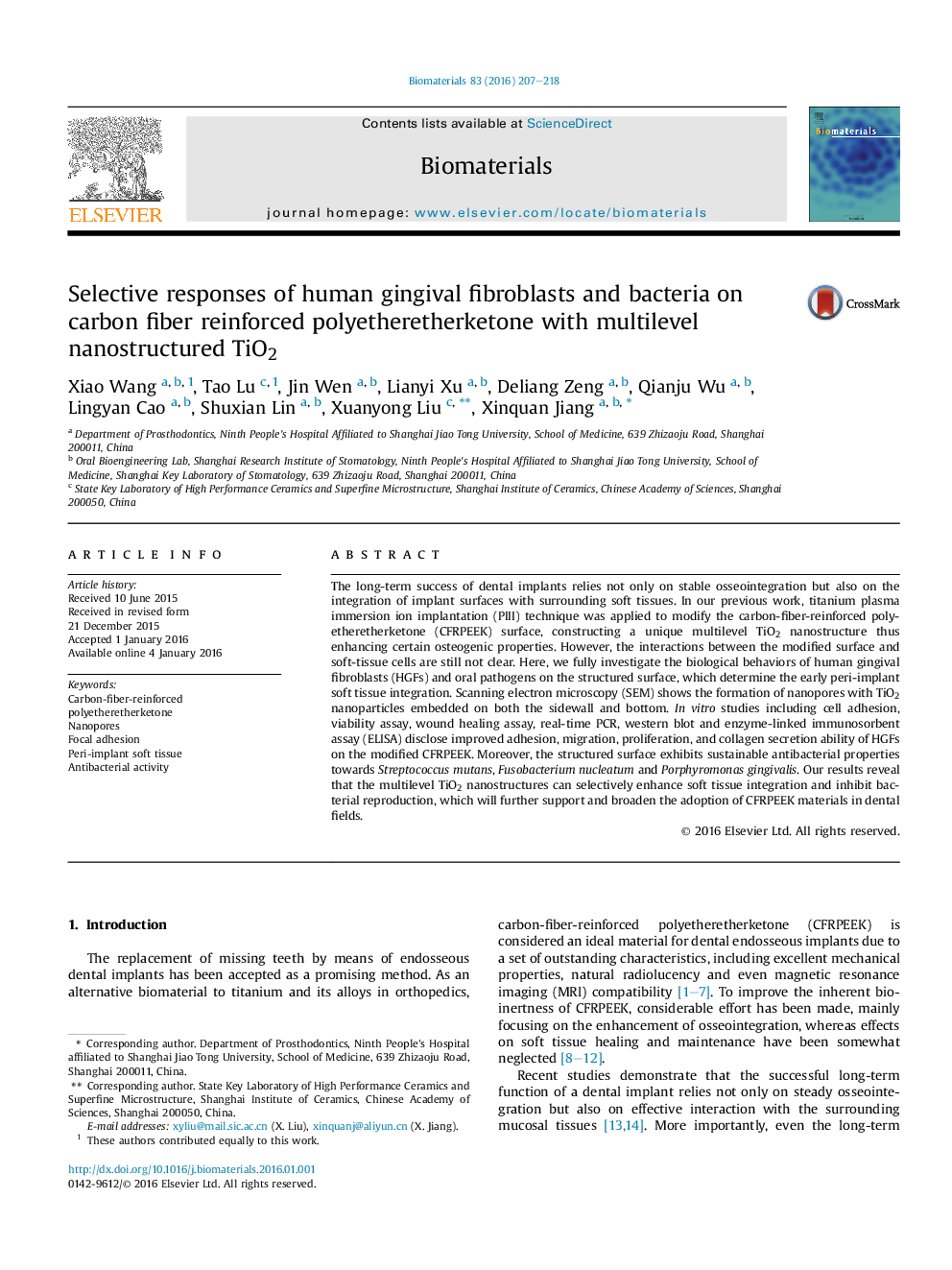| Article ID | Journal | Published Year | Pages | File Type |
|---|---|---|---|---|
| 6485116 | Biomaterials | 2016 | 12 Pages |
Abstract
The long-term success of dental implants relies not only on stable osseointegration but also on the integration of implant surfaces with surrounding soft tissues. In our previous work, titanium plasma immersion ion implantation (PIII) technique was applied to modify the carbon-fiber-reinforced polyetheretherketone (CFRPEEK) surface, constructing a unique multilevel TiO2 nanostructure thus enhancing certain osteogenic properties. However, the interactions between the modified surface and soft-tissue cells are still not clear. Here, we fully investigate the biological behaviors of human gingival fibroblasts (HGFs) and oral pathogens on the structured surface, which determine the early peri-implant soft tissue integration. Scanning electron microscopy (SEM) shows the formation of nanopores with TiO2 nanoparticles embedded on both the sidewall and bottom. In vitro studies including cell adhesion, viability assay, wound healing assay, real-time PCR, western blot and enzyme-linked immunosorbent assay (ELISA) disclose improved adhesion, migration, proliferation, and collagen secretion ability of HGFs on the modified CFRPEEK. Moreover, the structured surface exhibits sustainable antibacterial properties towards Streptococcus mutans, Fusobacterium nucleatum and Porphyromonas gingivalis. Our results reveal that the multilevel TiO2 nanostructures can selectively enhance soft tissue integration and inhibit bacterial reproduction, which will further support and broaden the adoption of CFRPEEK materials in dental fields.
Related Topics
Physical Sciences and Engineering
Chemical Engineering
Bioengineering
Authors
Xiao Wang, Tao Lu, Jin Wen, Lianyi Xu, Deliang Zeng, Qianju Wu, Lingyan Cao, Shuxian Lin, Xuanyong Liu, Xinquan Jiang,
